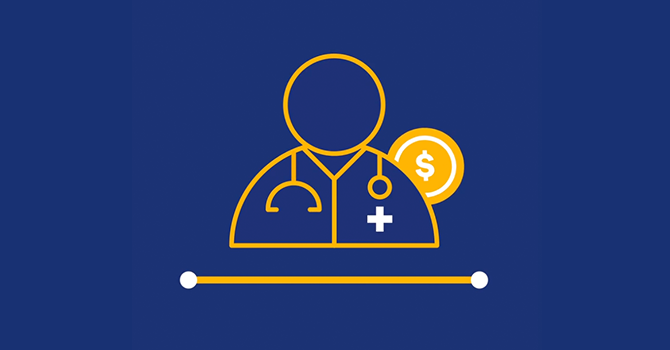After completing medical school, new doctors face a unique set of financial challenges. The average medical school graduate in 2023 owes more than $250,000 in total student loan debt, while the average salary for a resident is only about $67,000. This high debt-to-income ratio (DTI) and large student loan payments every month can make home ownership difficult for doctors early in their careers.
Recognizing that early career doctors may have difficulty saving for a down payment on a home, some lenders such as Laurel Road offer special mortgage products for physicians and dentists1 to help them achieve home ownership. These loans have fewer restrictions than conventional mortgages and recognize the lender’s trust in medical professionals’ creditworthiness and earning potential.
Physician Mortgages
A physician mortgage, sometimes called a “doctor mortgage,” is a special type of mortgage designed specifically to help make home ownership accessible to physicians and dentists managing a large amount of medical student debt. Some of the benefits of this type of mortgage may include:
- Low down payment. Lenders recognize that physicians and dentists may have difficulty saving for a down payment on a home on top of managing medical school debt. To help alleviate the pressure, a physician mortgage typically offers a low down payment option.
- No PMI. Traditional mortgages will typically require borrowers to pay private mortgage insurance (PMI) if they’re unable to make a down payment of 20%, while a physician and dentist mortgage may not require PMI, even with a down payment of less than 20%.
- Low interest rates. Competitive fixed and variable APRs for different terms are typically available.
Regular Mortgages
Unlike physician mortgages, conventional mortgages typically have more rules and restrictions. Most notably, a conventional mortgage usually requires home buyers to provide a 20% down payment.
PMI with less than a 20% down payment
With a conventional mortgage, if a buyer is unable to make a 20% down payment, lenders will typically require you to pay for private mortgage insurance, or PMI, to protect themselves in case you’re unable to make your payments. PMI is usually added to your monthly mortgage payment and typically costs between 0.6% to 1.9% of your loan amount annually, although a high credit score and/or rising property values in your area could help keep that cost on the lower end. PMI can be a significant additional monthly expense on top of a monthly mortgage payment and may not go away until your mortgage balance reaches 78% of the home’s original value or you reach the halfway point of your mortgage term. Note that there are some exceptions to PMI with some specialized mortgage products, such as with VA loans.
Market interest rates
There are two types of mortgages: a fixed rate mortgage or an adjustable-rate mortgage (ARM). A fixed rate loan has an interest rate that stays the same throughout the life of the loan while in the case of an ARM, the interest rate adjusts throughout the loan term. Fixed rate loans have various term options for borrowers, while ARMs usually have a 30-year term. Most fixed rate mortgages will have a 30-year or 15-year term, though some lenders offer 20-year terms.
How does my down payment impact my mortgage?
Estimate the financial impact of your down payment using this simple calculator.
Your Estimated Mortgage Results
-
$0
Monthly Payment
-
$0
Total Loan Amount
-
$0
Total Interest Paid
Why a physician mortgage makes sense for doctors at different career stages
For many doctors pursuing home ownership, taking advantage of a physician mortgage can be an excellent option especially during early- and mid-stage career.
Early Career
During or right after residency or fellowship, a physician mortgage may make sense for doctors in their early careers. While the intensity of medical training may mean you haven’t been able to save up for a down payment, this type of mortgage is specifically designed to support the unique financial needs of doctors at this career stage. While you continue to reach your full earning potential, a physician mortgage can allow you to invest and start building equity in your home. Learn more about budgeting to reach your goals as a resident or early attending here.
Mid-Career
For doctors in the mid-career stage, a physician mortgage may still be a good option as you finish paying off medical school debt and continue to build on your earning potential as an attending physician. Depending on your other financial goals, putting less than 20% down, may give you the financial flexibility to focus on other goals. Perhaps your additional income is tied up in establishing a private practice. Perhaps you’d like to purchase a vacation home?
As you start to reach your higher interning potential, doctors at this stage might also consider other mortgage products in addition to physician mortgages. It’s important to talk to your lender to understand all the options available to you and determine which mortgage option makes the most sense for you based on your financial needs.
No matter where you are in your medical career, a physician mortgage could help you get closer to home ownership with specific benefits and financing options tailored for physicians and dentist. Learn more about Laurel Road’s Physician Mortgage options here.
Sources:




